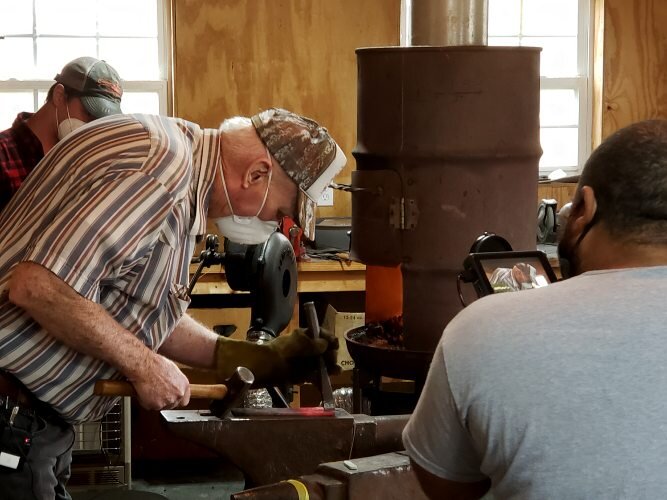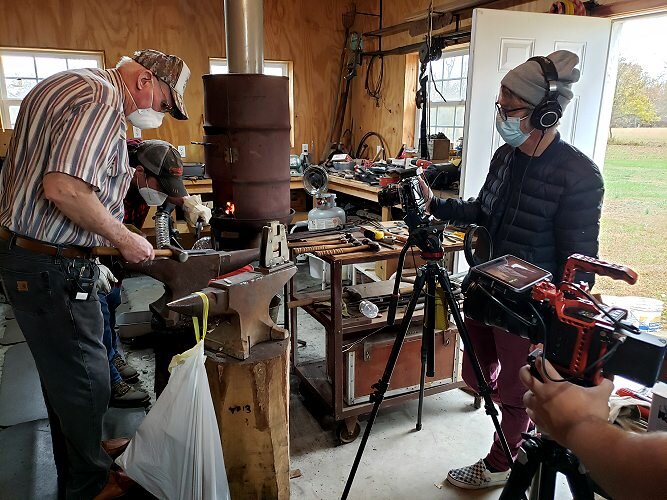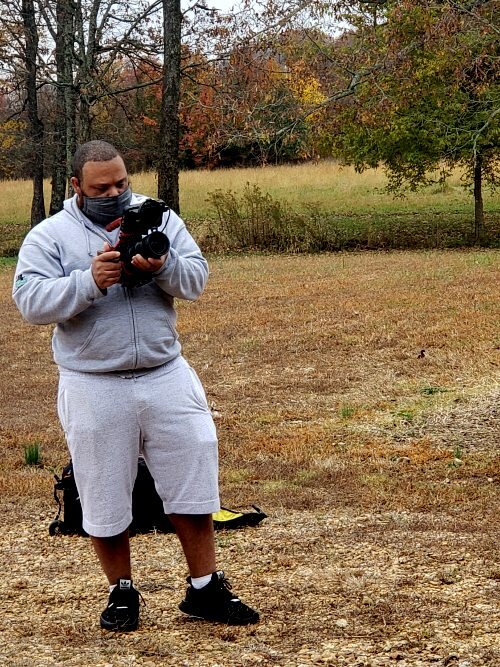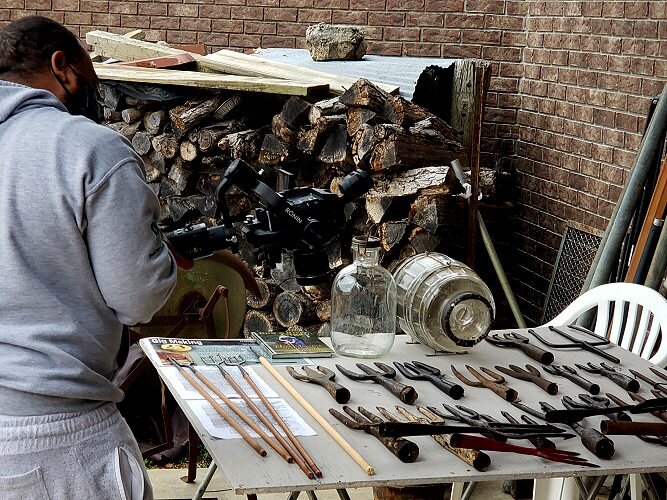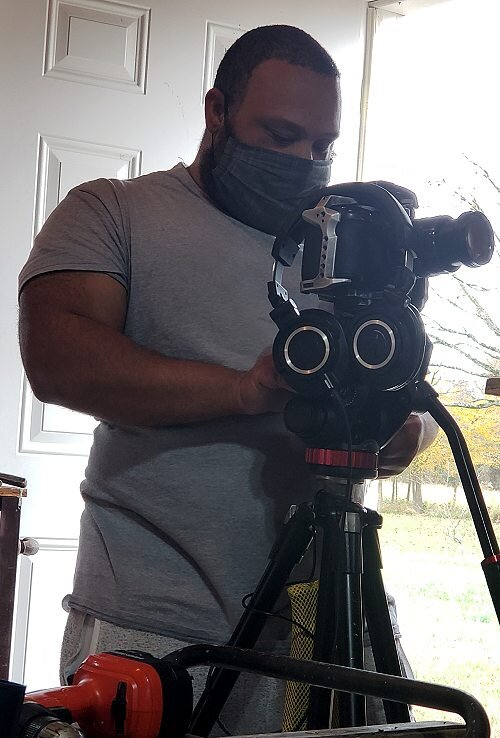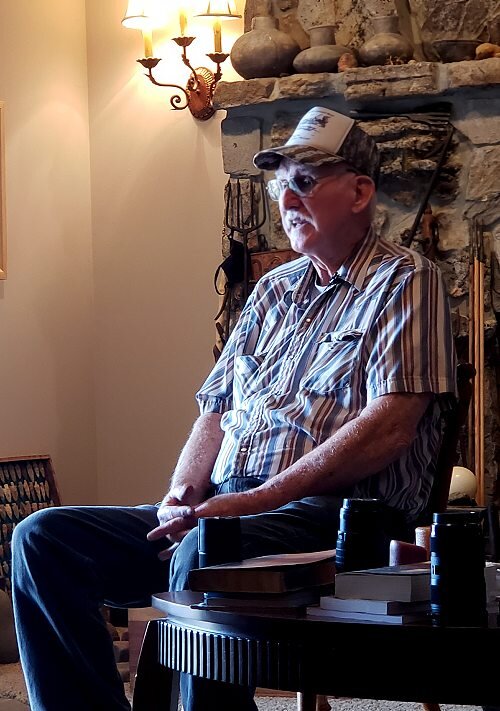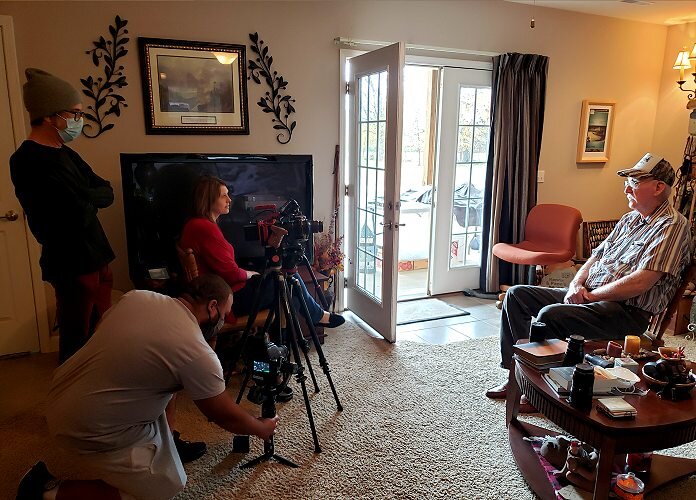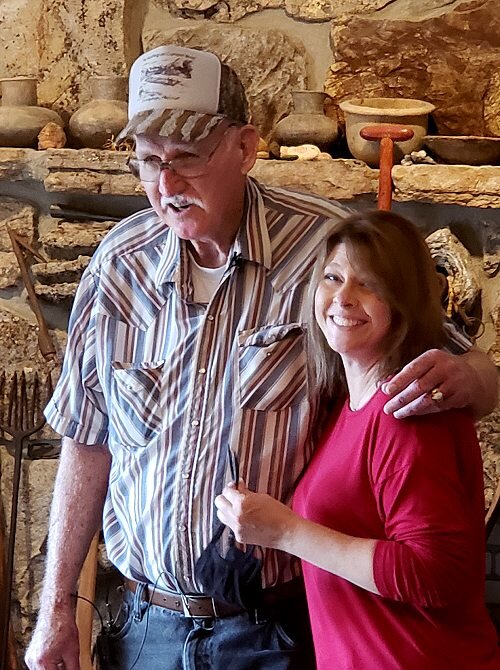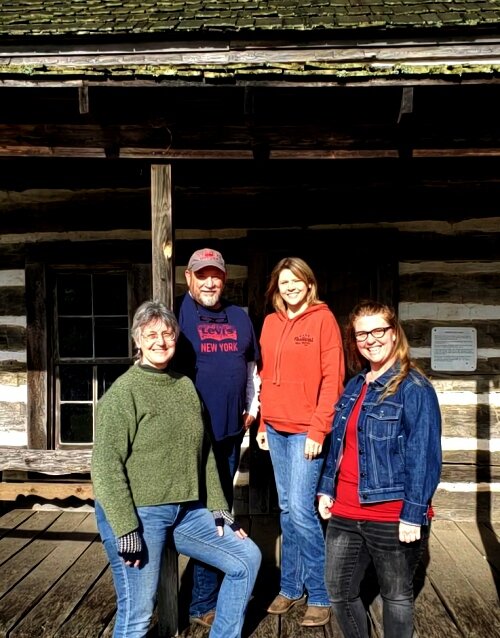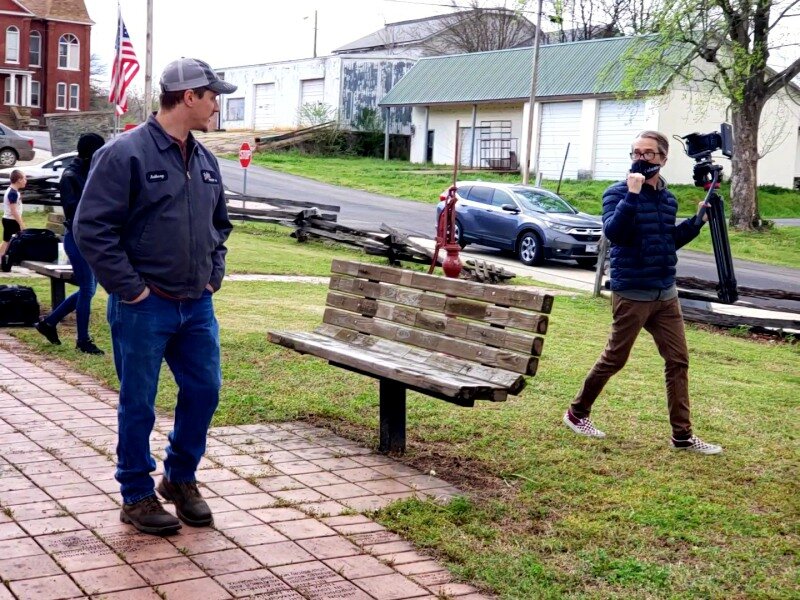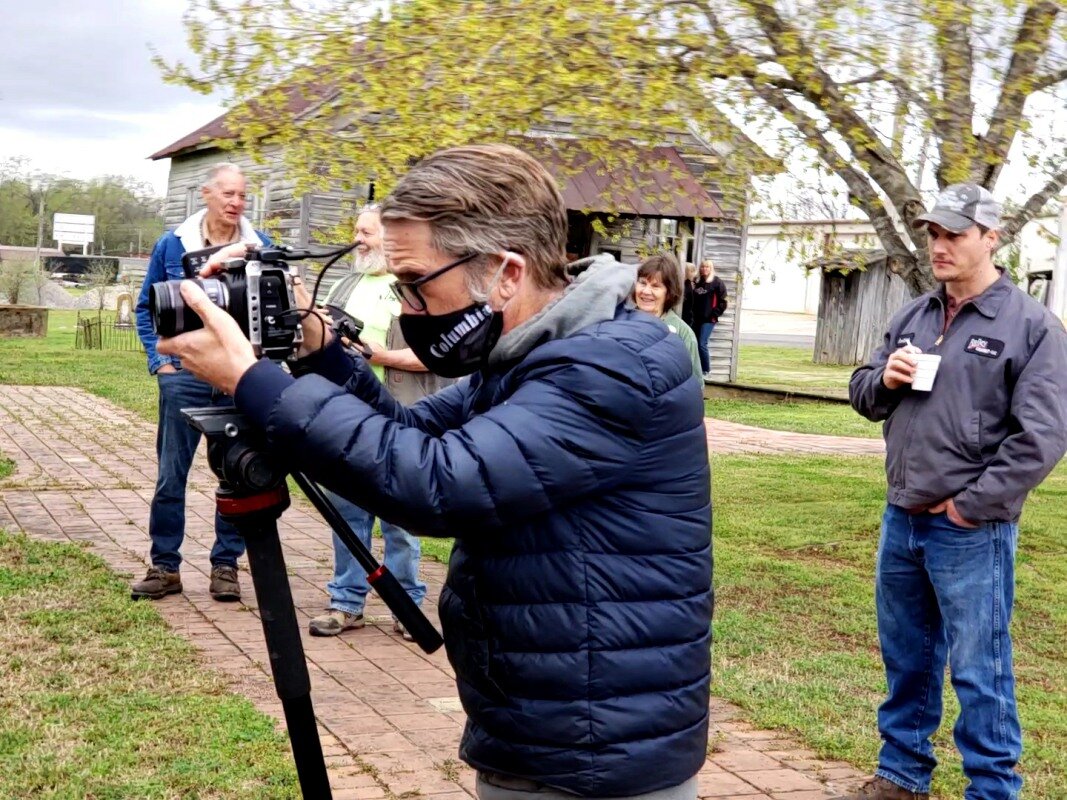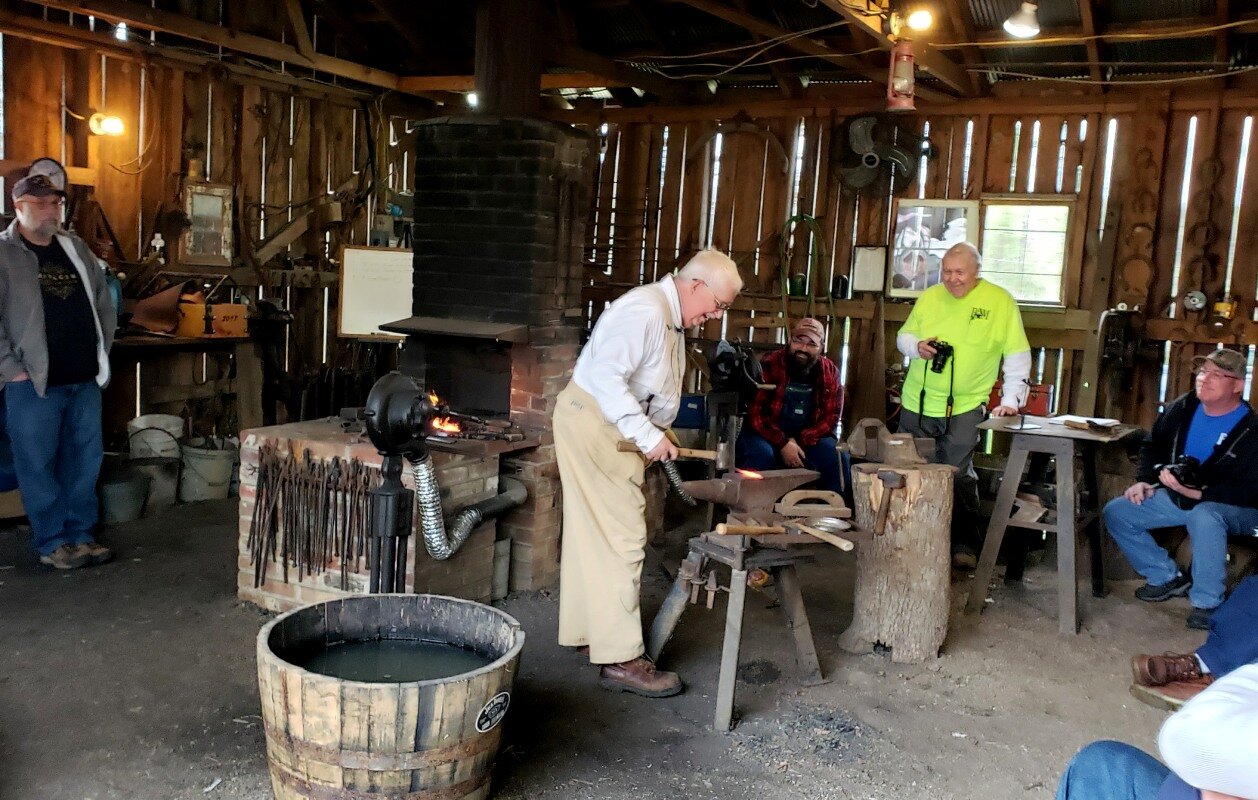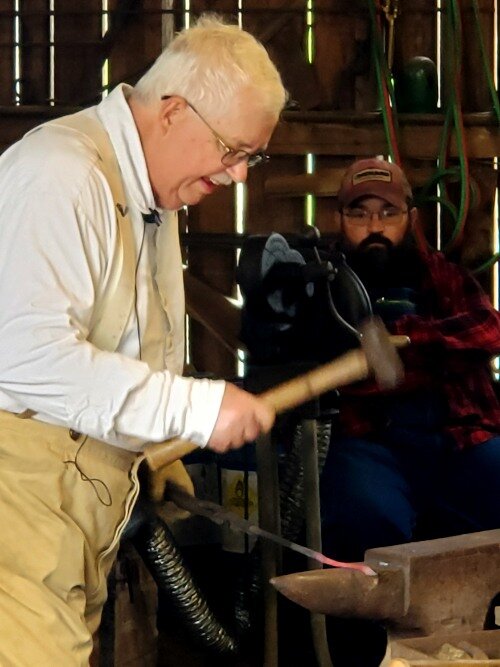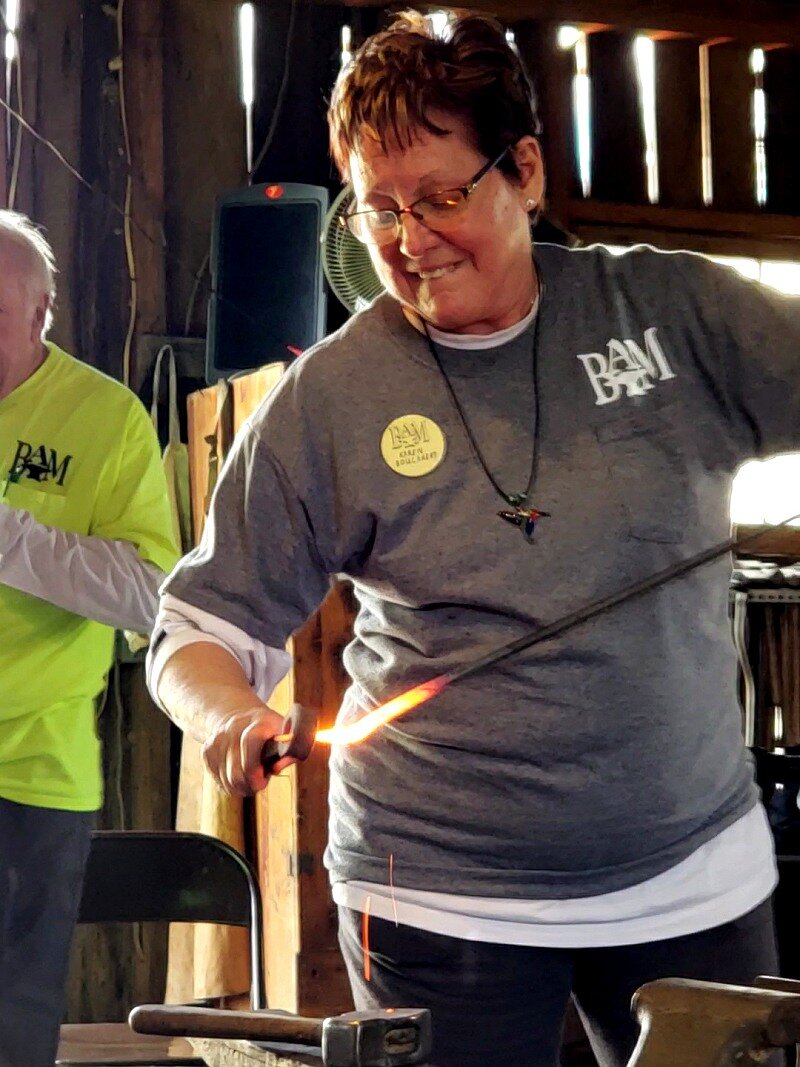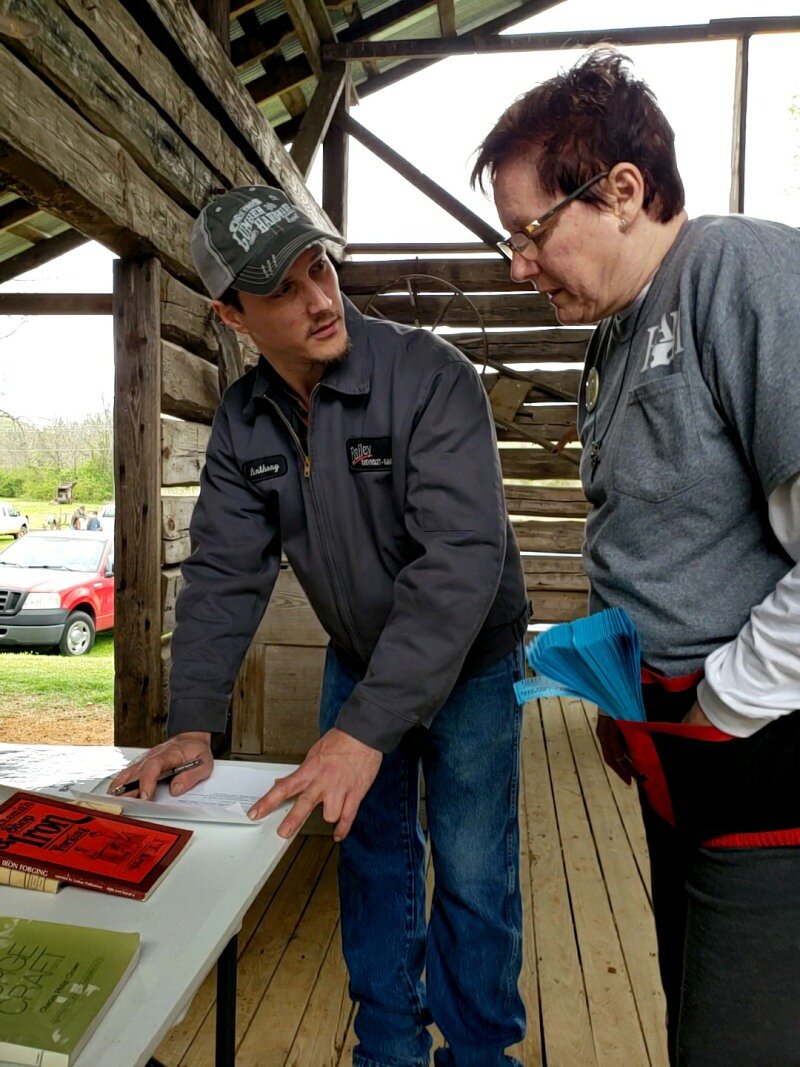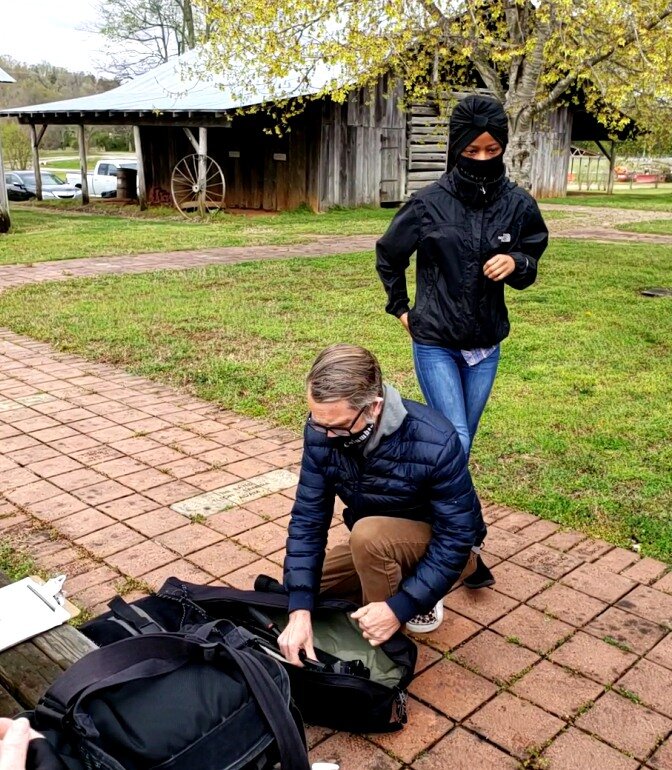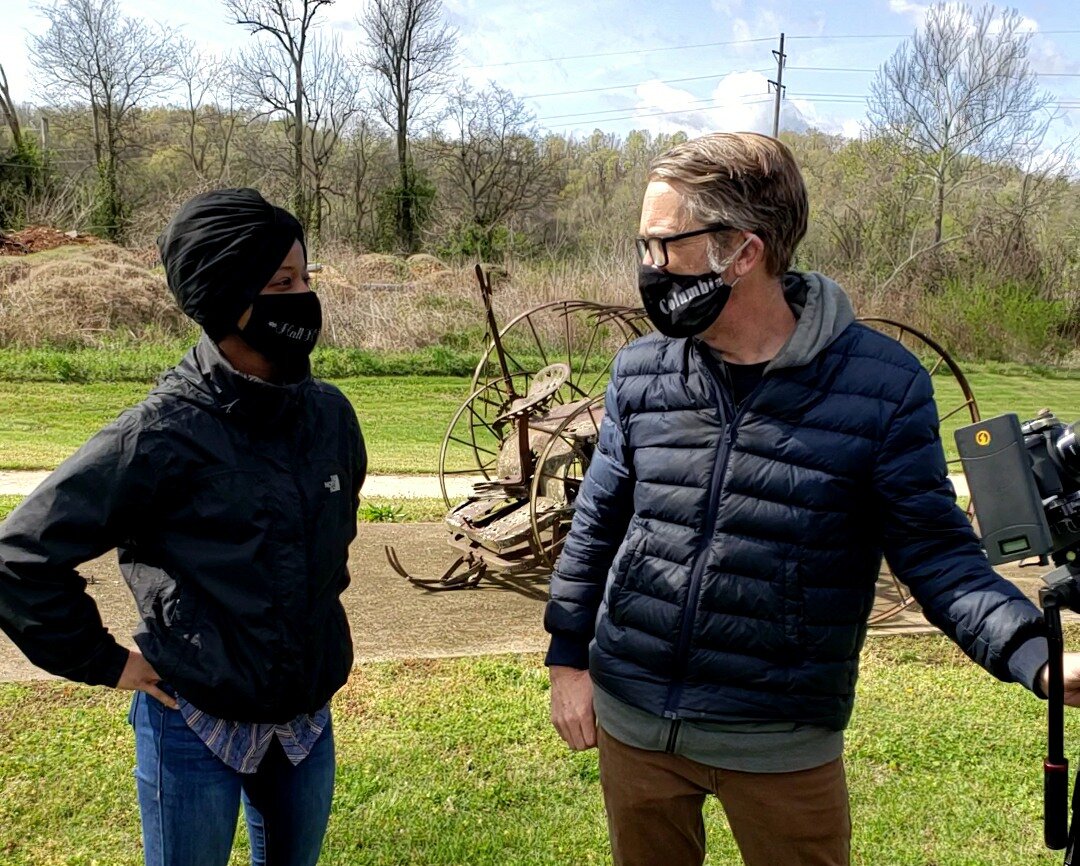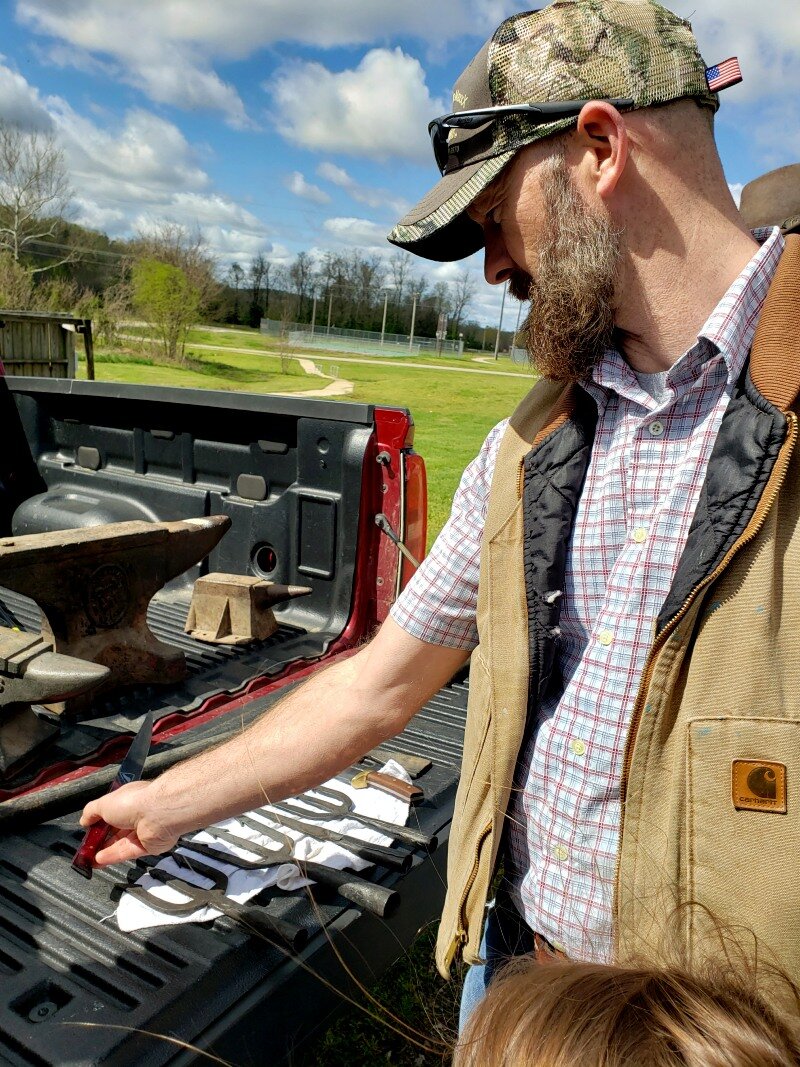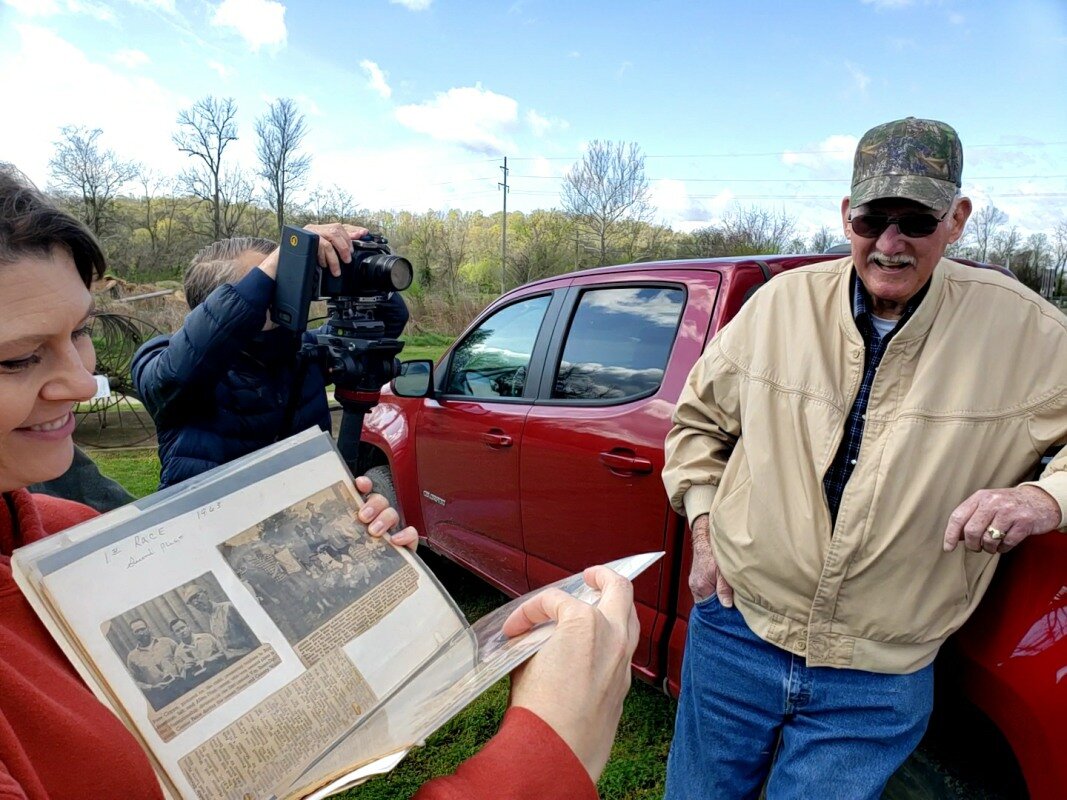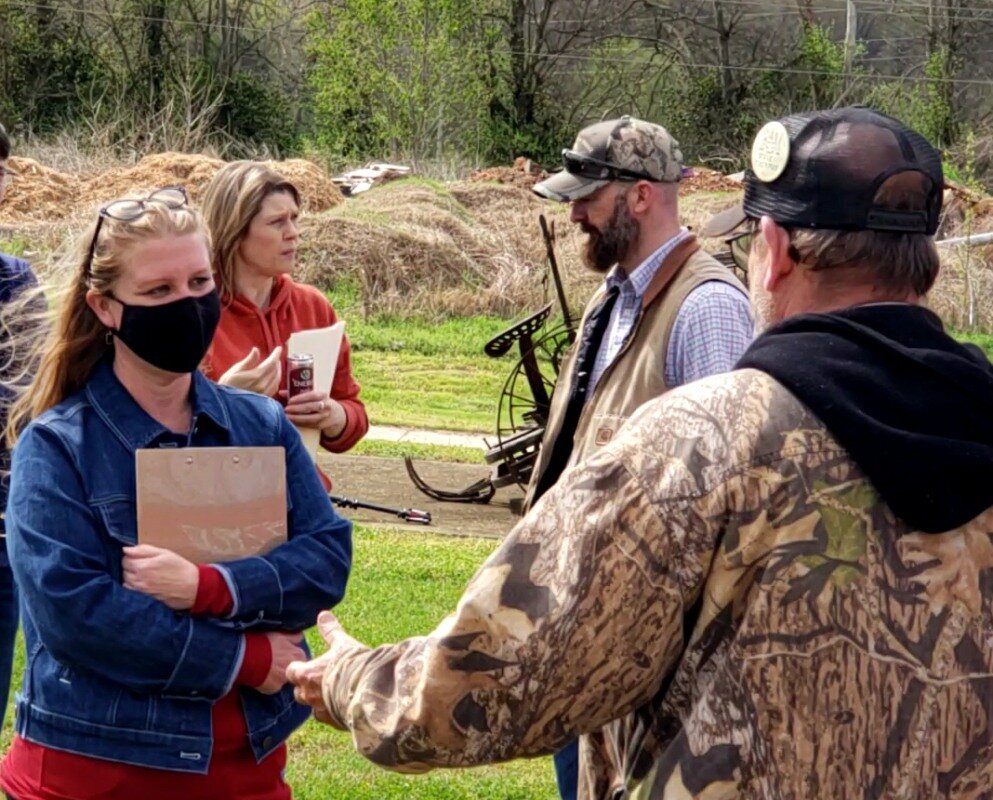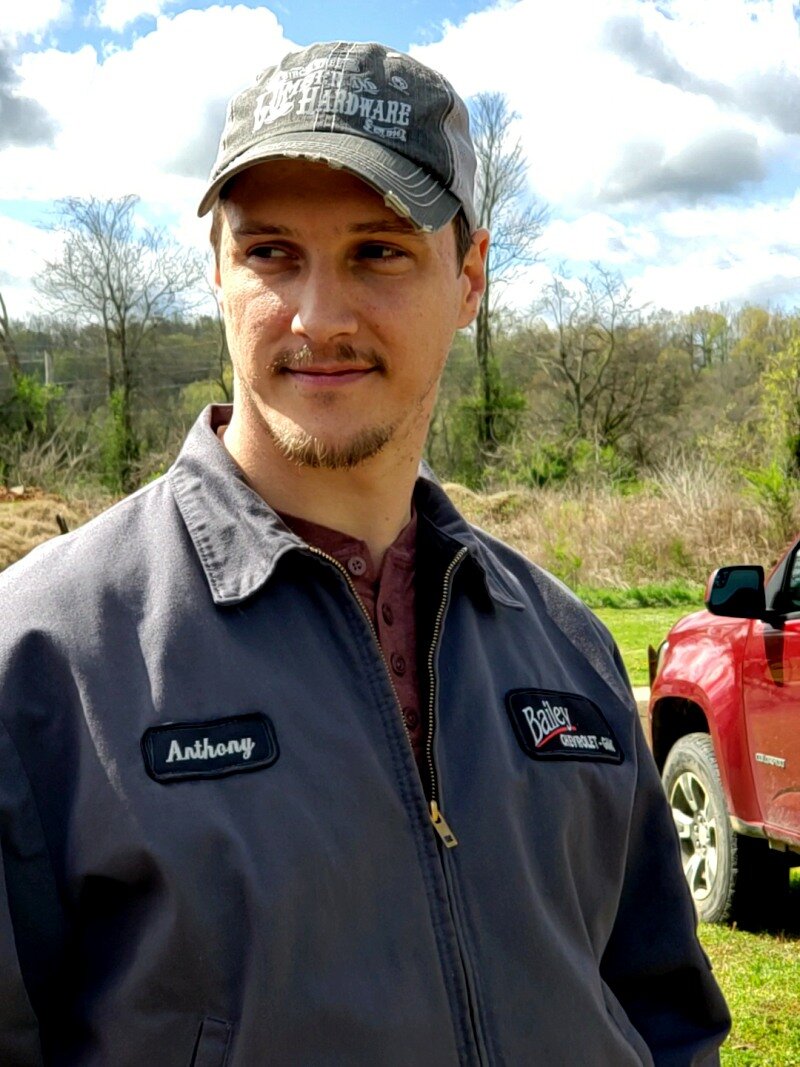My Ozarks Documentary Film Series
My Ozarks is a collection of short documentary films: intimate portraits of real people, places and experiences in the Ozarks. Our goal is to increase interest in the Ozarks and expand cultural and ecotourism to generate economic opportunities for artisans and entrepreneurs across the region.
Episode 7: Ray Joe
The seventh episode in the My Ozarks documentary film series introduces Ray Joe Hastings and his apprentice Anthony Martin as they work together in Ray Joe’s home blacksmith shop creating a traditional fishing gig by hand. Ray Joe is a master gig-maker, as well as a remarkable storyteller who brings the old Ozark ways to life. He learned to make gigs from Paul Martin, who was an exceptionally skilled Ozark gig-maker. Anthony Martin is Paul Martin’s grandson. The opportunity to learn how to make gigs from one of his grandfather’s apprentices connects Anthony to his heritage in a deeply meaningful way.
The Film
A film by Sean Loftin and Quinsonta Boyd filmed on location in Ripley County, Missouri.
Doniphan, Missouri 36.62077 N°, 90.82257° W
The Back Story
Ray Joe Hastings, Doniphan, Missouri
Ray Joe Hastings
Photo by Sasha Daucus
Ray Joe Hastings’ life has been intertwined with Ozark rivers since the beginning. When he tells stories about the river, you can hear the water splash off the oars and feel the moisture hanging in the air. He was born on the west side of the Current River in Ripley County, and spent his early years helping to provide what his family needed from the land.
The Current River offered both sustenance and recreation. In the case of fish gigging, it offered both at the same time. Ray Joe and his brothers learned how to gig from their father. When he tells the story of eagerly getting ready to go down to the river to hunt for fish, you get the feeling that his father must have had the same love of life that you feel in Ray Joe. How many things, asks Ray Joe, are so much fun to do and then afterwards you also go home with food for the table?
His father’s skills must have been impressive in other ways too. Ray Joe tells of how he could run the river at night with no light, even from the moon. Ray Joe could do the same, but the awe in his voice as he describes his father’s skills lets you know that he learned from a master.
He also learned how to make gigs from a master—Paul Martin, whose reputation as one of the finest Ozark gig-makers lives on.
Ray Joe’s life has changed a lot since his early years. Although he still lives close to the river, he’s on high ground now. He and his wife Polly live in a large comfortable home on the outskirts of Doniphan. His life, like the river, has taken him around many curves, but he’s navigated it with the same skill and intuition that he learned early on. One constant has been his love of the culture that the river has played a large role in creating. His knowledge covers such diverse areas as the Indigenous people who were the first to live here, and their artifacts; the later history of the Settlers, including history and practice of timbering in this area; and, of course, everything that can be known about gigging. If you want to know about it, his book, Bow & River Gigs, is a deep and fascinating dive into the topic. Or if you’re lucky and he has the time, ask him. Few can tell it as well as he does.
Anthony Martin
Photo by Sasha Daucus
Anthony Martin, Winona, Missouri
Anthony is Paul Martin’s grandson. Paul Martin taught Ray Joe the art and craft of making gigs by hand in a 6-month apprenticeship through the Missouri Folk Arts Traditional Apprenticeship Program. As a youngster, Anthony showed interest in learning about how to make gigs. By the time he was old enough, it was too late to learn from his master-gig-making grandfather, Paul. When the opportunity arose for him to learn from Ray Joe, Anthony could hardly believe his luck. Ray Joe says he can feel Paul’s skill in Anthony-- he’s a talented apprentice and who knows how good he’ll get. Ray Joe says he won’t be surprised if he outdoes his teacher.
Making Gigs
Gigs can be made either by hand, or mass produced. As Ray Joe and Anthony both say, manufactured gigs can be good, and they’ve both used them, but they undoubtedly lack the uniqueness of one made in the traditional way in the blacksmith shop.
Some of the gigs in Ray Joe’s extensive gig collection.
Photo by Sasha Daucus
The metal used in making a gig needs to be hard iron. Ray Joe’s favorite material is the leaf spring of an old car. The leaf spring is the part that holds the axle and it is particularly strong as well as flexible and offers that right shape to work with.
As with all handmade items, each gig maker had his own style and innovations. In Ray Joe’s large collection of gigs, he is able to point out the unique aspects of each one. In his book on Bow & River Gigs, Ray Joe describes many of these variations, and also gives short biographies of some of the most well-known gig-makers of the Southeast Ozarks. The honor given to gigging is reflected in the respect with which these gig-makers are described. Many of the gig-makers have descendants still living (and gigging) in the area.
Apprentice Anthony Martin, Apprentice Keith Whiteside, Master Gig-Maker Ray Joe Hastings, and Apprentice Steven Eikerman.
Photo by Sasha Daucus
Apprenticeship Program
When Anthony became interested in learning how to make gigs by hand, Ray Joe and he applied for a grant from the Missouri Folk Arts Apprenticeship program to cover the basic costs of Ray Joe’s time.
At first, they were not awarded the grant, due to the number of applications received, but they decided to go ahead with the work anyway. Shortly after we finished filming this video, Ray Joe got a call saying that they had been awarded the grant after all!
Anthony is not the only apprentice that Ray Joe has helped learn how to make gigs. At a recent gathering, two other previous apprentices— Keith Whiteside and Steven Eikerman— showed up to express their gratitude and respect to Ray Joe.
You can read more about the Missouri Traditional Arts Apprenticeship program here. https://mofolkarts.missouri.edu/traditional-arts-apprenticeship-program/
Gigging
The sport of gigging is a traditional Ozark practice of hunting fish with a multi-pronged gig on a pole or with a bow and arrow. You can still find guides to take you out on the river and show you how it’s done. It is usually done at night, and the clear shallow Ozark streams are ideal for it. The best time to do it is during the winter. Ask around at the restaurants and hotels to find out who’s guiding when you are there.
The giggers stand in the front of the boat, leaning on a guard rail, with their gig at the ready. A light is used to shine on the water to see the fish. Over the years the type of light used has changed—from simple natural sources, then to Coleman lanterns, and now LED lights powered by a battery.
The fish are hard to see. They hang out a few inches from the bottom of the river and are camouflaged, looking like the rocks on the bottom of clear Ozark streams. The kinds of fish that are hunted are locally called ‘rough fish’. This includes several different bony, bottom-feeding fish, and specifically excludes the more popular fish that are caught by rod-and-reel fishing.
It requires experience to gauge where to aim for the fish and accommodate for water refraction, and the strength of the current against the gig. It’s not easy to do, but it’s easier while traveling upstream. Most beginners try to stab at the fish, but the way to use a gig is more like using a pool cue, and letting the pole handle of the gig slide through your hands.
The best time to gig is in the dead of winter. That’s the time when the busy insect life of the Ozarks has quieted down and the rivers are especially fresh, clean and clear.
After the gigging is done, a bonfire is built on a handy river gravel bar, and the grease is heated. Everyone has a job. There’s a particular way to prepare the fish for frying so that the bones melt away in the cooking.
The whole event is a good excuse to gather family and friends to laugh and eat some of the freshest fish around. You might want to try another gigging feast specialty, too—the ‘tater sandwich’. A ‘tater sandwich’ is a potato sliced thin and then fried with onions in the hot grease. Then that all is stacked on a piece of bread and smothered in catsup. After fishing on a cold winter night, splashed with water and blown by the wind, you might feel like you’ve never had anything so delicious.
The Missouri Conservation Department also offers more information on what, where, and when to gig on their website. https://mdc.mo.gov/fishing/get-started-fishing/fish-gigging
Building a wooden Jon Boat
Photo courtesy of the Current River Heritage Museum
Jon Boats
Bow & River Gigs by Ray Joe Hastings.
Image courtesy of Acclaim Press
Gigging also is associated with another Ozark tradition: Jon Boats. The flat-bottom of these boats makes them stable and ideal for gigging in the shallow waters that are best for spotting the fish that hover a few inches above the bottom of the river. Making wooden Jon Boats is another traditional Ozark art that thrived in Ripley County. The Missouri Folk Arts Council has supported the teaching of this skill through master-apprentice programs in Ripley County.
History of Gigging
Exactly how and when gigging started, isn’t known. Ray Joe believes that it was developed by Indigenous Americans who lived and hunted in this part of the Ozarks; and that later Settlers saw and adopted it from them. The more recent history of gigging that peaked in Ripley and Carter County, is linked to the time when this area was the “lumber yard of the world”. At that time, many thousands of timber workers who lived and worked in the area during the late 1800’s, were suddenly out of a job, when the trees were gone and the mills’ non-local owners moved on. These timber workers turned to subsistence life styles, including gigging, to survive. If you are interested in reading more about that, Ray Joe tells this interesting story in his book, Bow and River Gigs.
Tom Kennon Blacksmith Shop
Filmmaker Sean Loftin filming on site at the Tom Kennon Blacksmith Shop during the Blacksmiths Association Meeting.
Photo by Keyairis Henry
Traditional gigs are made in a blacksmith shop. This traditional art was key to the survival of early Ozark communities, and nearly every small town had a blacksmith shop or two.
We are fortunate in Ripley County to have a working blacksmith shop that is open every Saturday. Members of the Blacksmith Association of Missouri (BAM) demonstrate the blacksmith's craft there.
Once a year, the BAM meets in Doniphan, and they allowed our film crew to come this year and record the lively crowd and action which you’ll see in the video.
Drop in some Saturday and watch a demonstration. Hand-forged items are for sale, and custom work can be commissioned. Children are welcome and seeing a demonstration is an exciting thing, with all the sights, sounds and smells of a blacksmith’s fire, hammer, and anvil. You might just catch the ‘blacksmithing bug’. For more information, Doniphan.org https://www.doniphan.org/blacksmith-shop or contact the Current River Heritage Museum https://www.doniphan.org/heritage-museum
BEHIND THE SCENES
The Filmmakers
Quinsonta Boyd is a young independent cinematographer and graduate of Roosevelt High School in St. Louis, Missouri. Quinsonta’s passion for film led him to create a short documentary represented in the St. Louis Filmmakers showcase in 2013. Since then, he has done work with organizations such as St. Louis Artworks, the Scholarship Foundation of St. Louis, Nine Network, St. Louis Science Center and Speak Up Productions.
Sean Loftin spent eight years as a photojournalist for newspapers and eight years as an elementary school teacher prior to working as Director of Photography for Speakup Productions and starting his own video production company in 2015. He believes stories are abundant in every community and seeks to connect with people who might not otherwise be heard, to understand and help share the stories most important to them.
Interested in more Ozark stories?
Episode 1: Jerica
The first episode in the My Ozarks documentary film series introduces Jerica, a 15-year-old girl who gigs for suckers on the Current River with her dad, a tradition passed down for generations. She embraces the temporary reprieve from cell phone service and social media to connect with people in real life. We will be using this film to introduce new audiences to the exciting and unique sport of fish gigging, to expand river tourism into the winter months.







